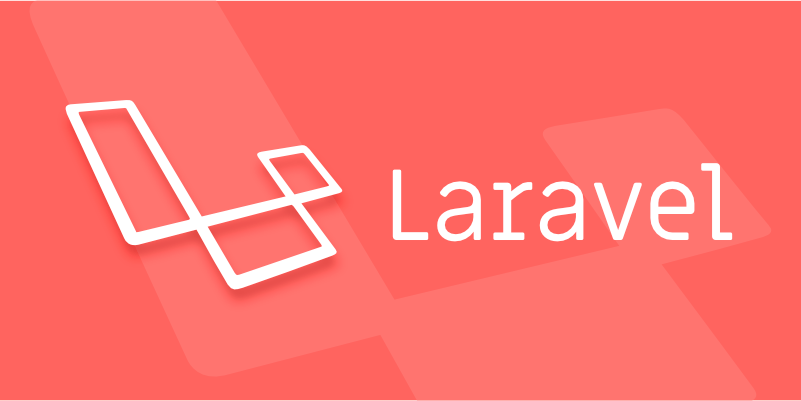How to use the when method for conditional queries in Laravel?
Aug 02, 2025 am 08:13 AMLaravel's when method is used to add constraints to the query when the condition is met, avoiding redundant if statements. 1. The when method receives three parameters: a callback executed when the condition is true, and an optional callback executed when the condition is false. 2. The condition can be a boolean value or a closure that returns a boolean value. 3. The callback function receives the query builder instance and can receive the value of the condition as the second parameter. 4. Complex logical judgment can be achieved through closures as conditions. 5. Support chain calls to multiple when to handle multiple conditions. 6. Applicable to API controllers and search filtering scenarios, making the code clearer and more Laravel-style. Therefore, the when method is a recommended way to deal with conditional logic in Eloquent queries, which can significantly improve code readability and maintenance.

In Laravel, the when method is a powerful and clean way to add conditional clauses to your queries. It allows you to apply query constraints only when certain conditions are met, without having to write multiple if statements that clutter your code.

How the when Method Works
The when method is available on Eloquent queries and the Query Builder. It accepts up to three parameters:
$query->when($condition, $callback, $defaultCallback);
- $condition : Can be a boolean or a closure that returns a boolean.
- $callback : A closure that receives the query builder and apply constraints — executed only if the condition is "truthy".
- $defaultCallback (optional) : A closure that runs if the condition is "falsy".
Basic Example
Suppose you're building a user search feature where you want to filter by role only if a role is provided:

$role = $request->input('role');
$users = User::query()
->when($role, function ($query, $role) {
return $query->where('role', $role);
})
->get();Here:
- If
$rolehas a value (ie, not null or empty), the closure runs and adds thewhereclause. - If
$roleis null or not provided, the closure is skipped.
Using a Closure as the Condition
You can also pass a closure as the first argument to evaluate more complex logic:

$users = User::query()
->when(auth()->user()->isAdmin(), function ($query) {
$query->where('is_active', true);
})
->get(); This applies the is_active filter only if the current user is an admin.
Provide a Default Action
You can specify a third closure to run when the condition is false:
$users = User::query()
-> when(
$request->has('verified'),
function ($query) {
$query->where('verified', true);
},
function ($query) {
$query->where('verified', false);
}
)
->get();This forces a query path for both cases — useful when you need to enforce logic based on presence/absence.
Multiple when Clauses
You can chain multiple when calls for different conditions:
$users = User::query()
->when($request->name, function ($query, $name) {
$query->where('name', 'like', "%{$name}%");
})
->when($request->active, function ($query, $active) {
$query->where('active', $active);
})
->when($request->role, function ($query, $role) {
$query->where('role', $role);
})
->orderBy('created_at', 'desc')
->get();This keeps your query dynamic and readable.
Key Points to Remember
- The second parameter (callback) receives the query builder and the value of the condition (if it's a variable).
- If the condition is a closure, its return value is passed to the callback.
- Avoid using
whenfor simple conditions that can be handled with ternary operators — but for complex or multiple conditions, it's ideal. - Works seamlessly with relationships, pagination, and other Eloquent features.
Using when makings your query logic more expressive and avoids messy if blocks. It's especially helpful in API controllers or search filters where inputs are optional.
Basically, when you need conditional logic in queries, reach for when() — it keeps things clean and Laravel-idiomatic.
The above is the detailed content of How to use the when method for conditional queries in Laravel?. For more information, please follow other related articles on the PHP Chinese website!

Hot AI Tools

Undress AI Tool
Undress images for free

Undresser.AI Undress
AI-powered app for creating realistic nude photos

AI Clothes Remover
Online AI tool for removing clothes from photos.

Clothoff.io
AI clothes remover

Video Face Swap
Swap faces in any video effortlessly with our completely free AI face swap tool!

Hot Article

Hot Tools

Notepad++7.3.1
Easy-to-use and free code editor

SublimeText3 Chinese version
Chinese version, very easy to use

Zend Studio 13.0.1
Powerful PHP integrated development environment

Dreamweaver CS6
Visual web development tools

SublimeText3 Mac version
God-level code editing software (SublimeText3)
 Working with pivot tables in Laravel Many-to-Many relationships
Jul 07, 2025 am 01:06 AM
Working with pivot tables in Laravel Many-to-Many relationships
Jul 07, 2025 am 01:06 AM
ToworkeffectivelywithpivottablesinLaravel,firstaccesspivotdatausingwithPivot()orwithTimestamps(),thenupdateentrieswithupdateExistingPivot(),managerelationshipsviadetach()andsync(),andusecustompivotmodelswhenneeded.1.UsewithPivot()toincludespecificcol
 Sending different types of notifications with Laravel
Jul 06, 2025 am 12:52 AM
Sending different types of notifications with Laravel
Jul 06, 2025 am 12:52 AM
Laravelprovidesacleanandflexiblewaytosendnotificationsviamultiplechannelslikeemail,SMS,in-appalerts,andpushnotifications.Youdefinenotificationchannelsinthevia()methodofanotificationclass,andimplementspecificmethodsliketoMail(),toDatabase(),ortoVonage
 Strategies for optimizing Laravel application performance
Jul 09, 2025 am 03:00 AM
Strategies for optimizing Laravel application performance
Jul 09, 2025 am 03:00 AM
Laravel performance optimization can improve application efficiency through four core directions. 1. Use the cache mechanism to reduce duplicate queries, store infrequently changing data through Cache::remember() and other methods to reduce database access frequency; 2. Optimize database from the model to query statements, avoid N 1 queries, specifying field queries, adding indexes, paging processing and reading and writing separation, and reduce bottlenecks; 3. Use time-consuming operations such as email sending and file exporting to queue asynchronous processing, use Supervisor to manage workers and set up retry mechanisms; 4. Use middleware and service providers reasonably to avoid complex logic and unnecessary initialization code, and delay loading of services to improve startup efficiency.
 Managing database state for testing in Laravel
Jul 13, 2025 am 03:08 AM
Managing database state for testing in Laravel
Jul 13, 2025 am 03:08 AM
Methods to manage database state in Laravel tests include using RefreshDatabase, selective seeding of data, careful use of transactions, and manual cleaning if necessary. 1. Use RefreshDatabasetrait to automatically migrate the database structure to ensure that each test is based on a clean database; 2. Use specific seeds to fill the necessary data and generate dynamic data in combination with the model factory; 3. Use DatabaseTransactionstrait to roll back the test changes, but pay attention to its limitations; 4. Manually truncate the table or reseed the database when it cannot be automatically cleaned. These methods are flexibly selected according to the type of test and environment to ensure the reliability and efficiency of the test.
 Choosing between Laravel Sanctum and Passport for API authentication
Jul 14, 2025 am 02:35 AM
Choosing between Laravel Sanctum and Passport for API authentication
Jul 14, 2025 am 02:35 AM
LaravelSanctum is suitable for simple, lightweight API certifications such as SPA or mobile applications, while Passport is suitable for scenarios where full OAuth2 functionality is required. 1. Sanctum provides token-based authentication, suitable for first-party clients; 2. Passport supports complex processes such as authorization codes and client credentials, suitable for third-party developers to access; 3. Sanctum installation and configuration are simpler and maintenance costs are low; 4. Passport functions are comprehensive but configuration is complex, suitable for platforms that require fine permission control. When selecting, you should determine whether the OAuth2 feature is required based on the project requirements.
 Implementing Database Transactions in Laravel?
Jul 08, 2025 am 01:02 AM
Implementing Database Transactions in Laravel?
Jul 08, 2025 am 01:02 AM
Laravel simplifies database transaction processing with built-in support. 1. Use the DB::transaction() method to automatically commit or rollback operations to ensure data integrity; 2. Support nested transactions and implement them through savepoints, but it is usually recommended to use a single transaction wrapper to avoid complexity; 3. Provide manual control methods such as beginTransaction(), commit() and rollBack(), suitable for scenarios that require more flexible processing; 4. Best practices include keeping transactions short, only using them when necessary, testing failures, and recording rollback information. Rationally choosing transaction management methods can help improve application reliability and performance.
 Handling HTTP Requests and Responses in Laravel.
Jul 16, 2025 am 03:21 AM
Handling HTTP Requests and Responses in Laravel.
Jul 16, 2025 am 03:21 AM
The core of handling HTTP requests and responses in Laravel is to master the acquisition of request data, response return and file upload. 1. When receiving request data, you can inject the Request instance through type prompts and use input() or magic methods to obtain fields, and combine validate() or form request classes for verification; 2. Return response supports strings, views, JSON, responses with status codes and headers and redirect operations; 3. When processing file uploads, you need to use the file() method and store() to store files. Before uploading, you should verify the file type and size, and the storage path can be saved to the database.
 Generating URLs for Named Routes in Laravel.
Jul 16, 2025 am 02:50 AM
Generating URLs for Named Routes in Laravel.
Jul 16, 2025 am 02:50 AM
The most common way to generate a named route in Laravel is to use the route() helper function, which automatically matches the path based on the route name and handles parameter binding. 1. Pass the route name and parameters in the controller or view, such as route('user.profile',['id'=>1]); 2. When multiple parameters, you only need to pass the array, and the order does not affect the matching, such as route('user.post.show',['id'=>1,'postId'=>10]); 3. Links can be directly embedded in the Blade template, such as viewing information; 4. When optional parameters are not provided, they are not displayed, such as route('user.post',






